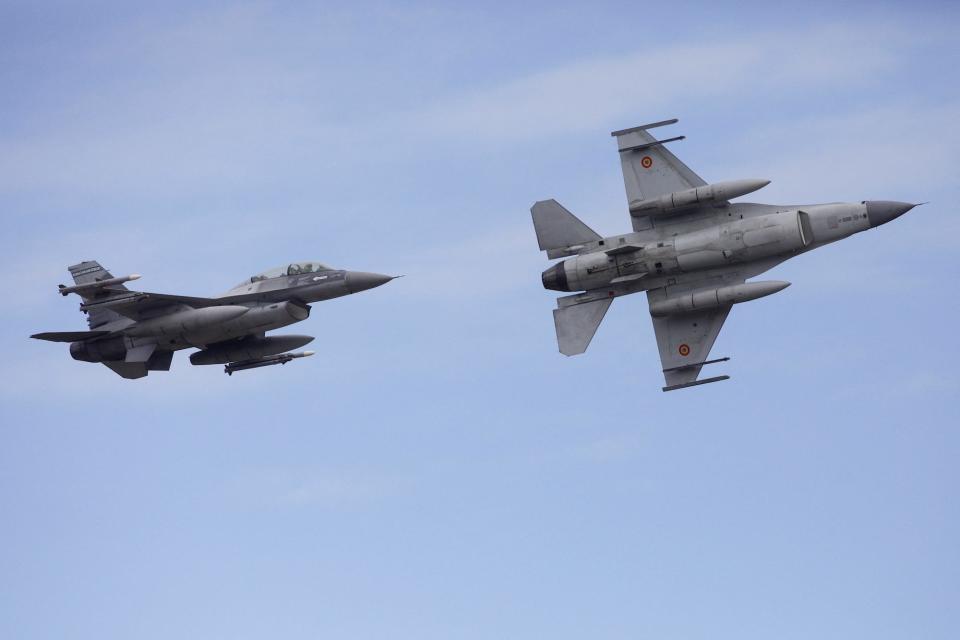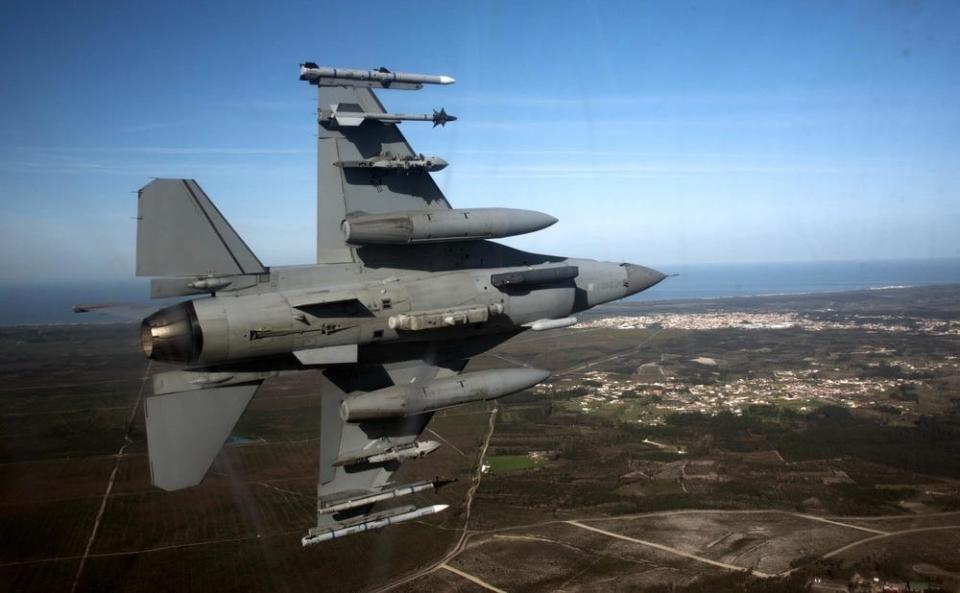The world's most popular fighter jet just turned 50, but it still packs a punch
The F-16 Fighting Falcon has been flying for over 50 years after first taking flight in early 1974.
With 4,500 units sold and 3,100 still operational, it is the world's most popular aircraft.
The F-16 pioneered new technology, and it remains a powerful, cost-effective jet, evolving with upgrades.
On January 20, 1974, a runway high-speed taxi test involving General Dynamics' YF-16 accidentally resulted in the first flight of the prototype aircraft that would become the world-famous F-16 Fighting Falcon, the most popular fighter jet.
Fifty years later, more than 4,500 F-16s have been sold — with 3,100 still in operation — and 25 countries are using the jet, which has become the poster child of fourth-generation aircraft.
The F-16 has cemented its place in aviation history not only for dominating the military jet market, but also for revolutionizing the way military aircraft are designed.
A new approach to dogfighting
Alex Hollings, a US veteran and an aviation journalist, told Business Insider that "the F-16 represented a fundamental shift in fighter design philosophy."
This new philosophy embraced the idea that air-to-air combat, more commonly known as dogfighting, was not an art form but a quantifiable science that required the aircraft to efficiently exchange kinetic and potential energies to best maneuver, he said.
To that effect, in order to achieve swifter, more aerobatic, and more energy-efficient maneuvers, the F-16 was built as the first aerodynamically unstable aircraft. This makes it extremely agile and allows it to even pull off 9g maneuvers on full fuel.
However, to control this instability without requiring the pilot to constantly manage the jet's control surfaces, another innovation was needed: the fly-by-wire system.

Until that point, fighter pilots had used manual controls to manage an aircraft's control surfaces, but having an unstable aircraft that constantly required manual corrections by the pilot wouldn't have been feasible. So a fly-by-wire system was installed to allow the jet's control surfaces to be managed by a flight-control computer.
"In an era when fighter aircraft were still just tools used by pilots, the F-16's fly-by-wire control represented a cooperative fusion of pilot skill and technological capability that has become a mainstay in fighter designs ever since," Hollings said.
Indeed, the aircraft's design DNA has made its way, to some extent, into all modern fighters, Hollings added, and that includes the F-35, which was designed to be the Fighting Falcon's successor.
Staying current
Initially built as an air-superiority platform, the F-16 has, since 1981 , served as a multirole fighter, able to perform a variety of missions, including electronic warfare and air-to-ground support.
Still a mainstay of the US Air Force and of air forces across the globe, during its long career, the F-16 has been used in numerous conflicts, including the Gulf War and the Afghanistan and Iraq wars.
Reflecting its dogfighting prowess, the jet has a recorded 76 kills in air-to-air combat with only one loss (some sources claim two). Its famed maneuverability has also been put to the test against surface-to-air threats, with an American F-16 managing to dodge six surface-to-air missiles in a row during Operation Desert Storm.
Numerous upgrades during its life have allowed it to stay current and evolve.
The most recent version of the jet is the Block 70/72. Among other upgrades, this version features improved avionics and targeting systems, the new Viper Shield electronic warfare suite, and a radar similar to that of the F-22 and F-35.

"While it may lack the stealth of the F-35, F-16s have proven their ability to survive in contested airspaces in conflicts around the world, and their ability to do so will only improve as new electronic warfare and missile countermeasure technologies emerge," Hollings said.
Another reason for the F-16's global popularity is its low operating cost. The F-16 has the lowest estimated operating cost per aircraft out of all the US military's fixed-wing platforms and among the lowest hourly costs.
Hollings said "the F-16's combination of high performance and relatively low operating cost will see it continue to serve as the backbone of American airpower for some time to come."
The US Air Force is planning a significant further upgrade to keep its F-16 fleet operational into the 2040s with Lockheed Martin — the aircraft's manufacturer since 1995 — saying it will stay viable until at least 2060.
However, as the skies of the future become increasingly dominated by stealth aircraft, the F-16's battlefield role may change.
"As the threat environment changes, we'll likely see a shift in the way aircraft like the F-16 are leveraged in combat," Hollings said.
In potential future conflicts, fifth-generation aircraft, like the F-35 and the F-22, may penetrate deeper into contested airspaces and relay target information back to less stealthy aircraft, like the F-16, which "will be carrying larger stand-off weapons operating beyond the reach of enemy air defenses," he said.
Read the original article on Business Insider

